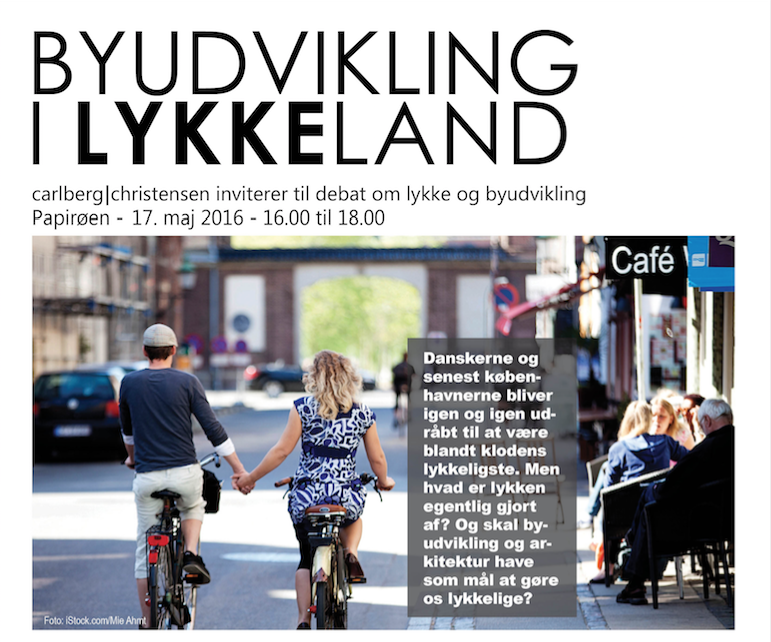
DEBATE ABOUT URBAN DEVELOPMENT IN ‘HAPPYLAND’
Happiness researchers claim that the happiest people are those who lead care-free lives. We may recognize that feeling from our own lives. We look forward to holidays and dinners with family and friends, and we feel comfortable in familiar surroundings. Does that mean that the good city is a city that aims to offer comfort and a care-free everyday life?
If instead we look back in time to ask ourselves what made our lives meaningful and rewarding, what stands out is often an entirely different type of experience. Moments where we rose to a challenge, allowed ourselves to get lost, were challenged by the unfamiliar and overcame difficulties. These moments often provided important experiences and meaning. Should a city actively promote that kind of experience?
The question is whether the effort to create a happy, comfortable and care-free city has its drawbacks? If urban planning and architecture focus on eliminating all obstacles and resistance, can we still care about and engage with others who are not like us? How do we learn to deal with the unfamiliar? Are we doing ourselves and society a disservice by aiming for a comfort culture and the elimination of obstacles and challenges?
Should the city be comfortable and welcoming, unfurled at our feet, because that creates happy citizens? Or should the city also seek to challenge us because that promotes our development as individuals and as citizens? Should we try to ensure that rich and poor live side by side? Should we create institutions, urban spaces and sports facilities that bring diverse groups of people together? Or should we give in to the fact that we prefer to live with people who are just like us? After all, birds of a feather flock together.
See the full programme for the event Byudvikling i Lykkeland (in Danish).